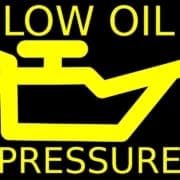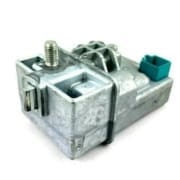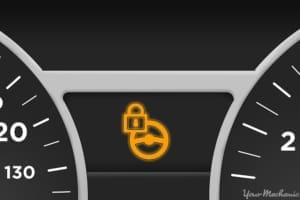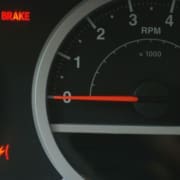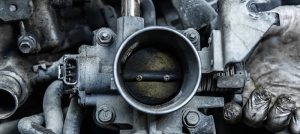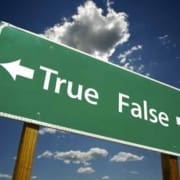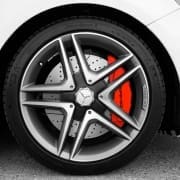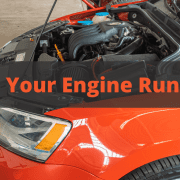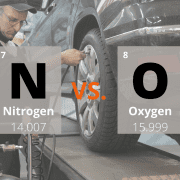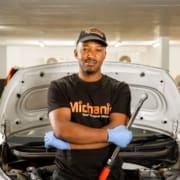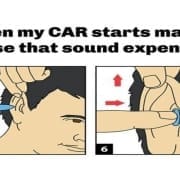My Mercedes Steering Is Locked And the Car Won’t Start – Steering Lock Warning sign On
Electronic Steering Lock Or ESL Fault Is Common Issue On Mercedes Benz W204
Most Mercedes Benz vehicles are fitted with an electronic steering locks (ESL). This steering lock module is designed to help you safeguard your car from theft. On AI has reported a trend increase in these faults especially on the W204 Mercedes Benz. The steering lock unit has become a source of frustration for many Mercedes Benz owners as it is costly and can be a huge inconvenience..
If you are experiencing faults with the ESL, i.e ESL is noisy or slow to operate, you should have the unit repaired immediately before you are left with a car you cannot use.
Common Symptoms Of A Faulty ESL (electronic steering lock) Unit
• The car won’t start, and the steering doesn’t unlock.
• A Noisy steering lock
• Key turns in Electronic Ignition Switch but the car will not start.
• The dash lights are off when turning key in Electronic Ignition Switch
• Electronic steering lock click or unlock sound cannot be heard when the key is inserted into the ignition.
• The steering wheel does not want to turn, even with the key inserted into EIS.
Is It Safe To Drive With The ESL Warning Light On?
In most instances, the warning light rarely illuminates while driving the car. In an unlikely event that it comes on while driving the car, you can continue to drive the car. Once you have stopped, you can see if you able to turn the key again and if the light stays on or goes off. As mentioned, when this light comes on, on your Mercedes Benz W204, you should contact a specialist auto electrician to look at it and resolve it
How Much Does It cost To Repair The Electronic Steering Lock.
the cost of repairing or replacing the ESL is somewhere between R22 000 and R25 000 from a dealership. Also note, the steering locks are not readily available in South Africa, so it may take up to 4 weeks to get your car working again. However, do not despair. At Michanic we have specialised auto electricians that are able to fix the issue for a fraction of the price.
Summary
While you might feel that everything is getting more complicated in modern vehicles, these complicated features have huge benefits for your cars’ security.
We at Michanic we have experienced Mercedes Benz mechanics who can identify the problem and solve it for you at the comfort of your home and reasonable prices. Our Mercedes Benz specialist are available in Gauteng, Cape Town, KZN and Emalahleni for your convenience
Click here to get an instant online quote for a car service and repairs for your car!
Red Lighting Bolt Symbol On My Jeep Dashboard – (Electronic throttle Control Warning Sign) What Does This Mean?
Red Lighting Bolt Symbol On My Jeep Dashboard – (Electronic throttle Control Warning Sign) What Does This Mean?
The warning signs on the dashboard can be quite daunting and scary for most drivers. The purpose of warning signs on the dashboard, is to alert you of any issues that your car might have with any of the electronic systems.
Todays’ cars are filled with sensors and control modules to ensure that your car is always safe and runs optimally.
At Michanic, using our AI trend analysis we have noticed that most Jeeps after reaching between 130 000KM and 200 000 KM start to experiences Electronic Throttle Control issues. This red lightning bolt symbol on the dashboard, indicates that there is a problem with Jeeps’ throttle which may be caused by the following:
Faulty Throttle Control Sensor (Most Common According To Michanic AI)
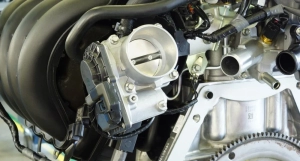
Modern cars have a lot of sensors at everywhere. While this enables all kinds of cool and safety features, the downside of it all is that as soon as one sensor goes wrong, the entire systems can go down. That’s the case with the throttle control sensor, also known as the throttle body position sensor.
This sensor tells the cars’ computer what the throttle body’s current position, so the computer box knows the ideal fuel and timing ratios to adjust everything else too. With a faulty throttle position sensor, the ECU doesn’t know how to time everything, and the red lightning bolt symbol or ETC warning sign will illuminate.
Stuck Throttle Body
A dirty throttle body can sometimes get stuck or damaged and when that is the case, the system might report a ETC fault by illuminating the red lightning bolt symbol on your Jeep dashboard.
A visual and mechanical inspection will help you determine if the throttle body is working the way it should. Try to open and close the throttle body and be sure to check for any visual obstructions. The throttle body should open with minimum effort and should close automatically as soon as you release it.
Faulty Accelerator Pedal Position Sensor or Module
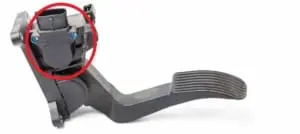
In addition to the throttle position sensor, the electronic throttle control consists of an accelerator pedal position sensor and an accelerator pedal module. The acceleration pedal position sensor sends the current position of the accelerator pedal to the control module.
The module uses this information to communicate with the throttle position sensor to establish the correct throttle position. If any of these components wear out and break, you’ll end up with a trouble code, and the system won’t work the way it should.
Symptoms Of A Faulty Electronic Throttle Control
While the most obvious sign of a faulty Electronic Throttle Control is a lightning bolt symbol on your Jeep dashboard, sometimes, this may not be the case however you would experience some performance issues such as car losing power or not accelerating at all.
Car Losing Power – Reduced Acceleration
The electronic throttle control tells the throttle body how much to open when you press the accelerator pedal down. But if the controls aren’t working, then you’ll be unable to accelerate the way you should when you press the pedal. The system will rarely fail entirely right away, so you’ll still be able to drive some, but the longer you wait, the worse the problems will get. A slightly reduced acceleration today might turn into a full-blown failure to accelerate when you need to tomorrow.
High Idle or Stalling Engine
Sometimes faulty electronic throttle controls will lead to a throttle body that never closes to a regular idle. Instead, it might only close partially, leading to an excessively high idle. Conversely, the throttle might close too much, either while idling or while driving. If this happens, your engine might stall out since it’s not getting the necessary air to run correctly. If it’s not dying completely, it might sputter as it struggles to stay running. Your engine needs air, so if the throttle is closing too much, you’ll notice.
Can I Drive With the Red Lightning Symbol Or Faulty Electronic Throttle Control?
The short answer is that YES you can drive with a faulty ETC however you shouldn’t. While you can get away with driving with a faulty ETC, for little while, doing this over an extended period, it may end up causing issues and damaging your engine. Driving with this issues can also be of safety concern. Inconsistent acceleration can turn deadly very fast and that is why you should avoid driving while the car display the red lightning bolt symbol on your Jeep.
Finally, electronic throttle controls rarely fail all at once. When you first notice the light, it will likely still work to some degree. But the longer you put off repairs, the more severe the symptoms will become, and the more dangerous it will become to drive your vehicle.
Summary
While you might feel that everything is getting more complicated in modern vehicles, these complicated features have huge benefits. Not only do you get better fuel economy, but you get a more powerful and a more responsive engine.
We at Michanic we have experienced Jeep mechanics who can identify the problem and solve it for you at the comfort of your home and reasonable prices. Our Jeep specialist are available in Gauteng, Cape Town, KZN and Emalahleni for your convenience
Click here to get an instant online quote for a car service and repairs for your car!
12 Car Myths You Should Stop Believing
12 Car Myths You Should Forget About
You should let your engine warm up before driving, especially in winter. Using premium petrol will clean your engine. SUVs are safer than small cars. We have all heard similar car tips, but have you ever wondered whether they are true? As it turns out, many of them aren’t.
There are a lot of car myths that have been around for decades and are still popular among car owners, despite having been debunked countless times. Some of them originate from the past, whereas others are just completely false. Have you heard any of the myths listed here?
SUVs Are Safer Than Small Cars
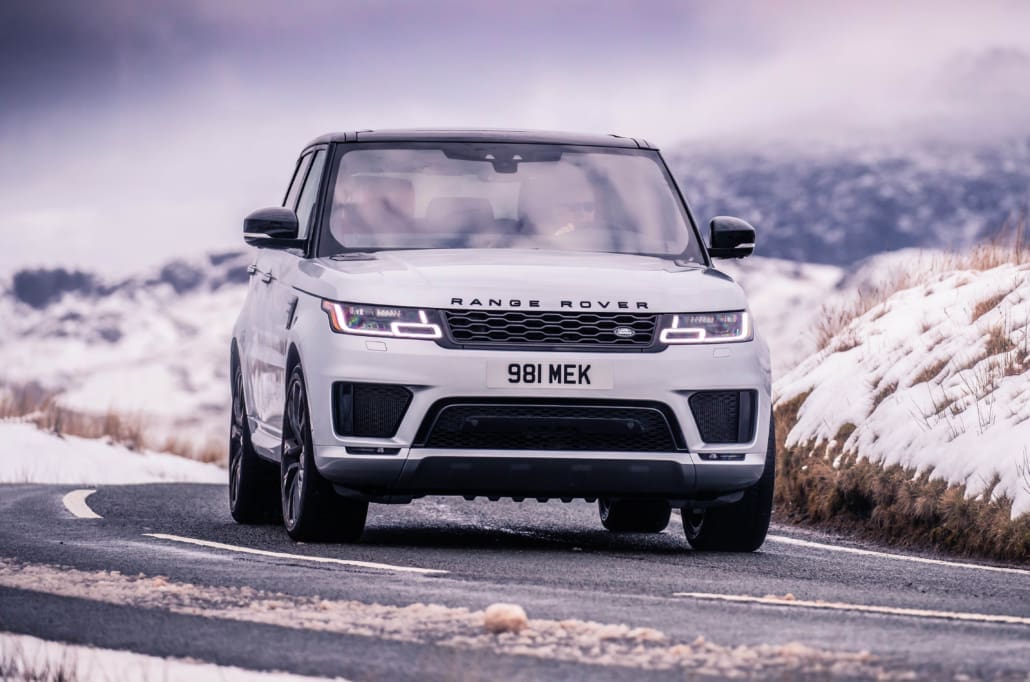
This popular myth has been the center of discussion for years, so it is easy to see why the answer still remains unclear. The Insurance Institute for Highway Safety (IIHS) states that “a bigger, heavier vehicle provides better crash protection than a smaller, lighter one, assuming no other differences.” Although this is true, SUVs’ higher center of gravity means they are more likely to roll over on tight turns or during a crash. SUVs also require a longer braking distance than smaller cars, even despite having larger brakes.
Car manufacturers are, however, working hard on improving their SUVs’ safety features by equipping them with all kinds of traction and stability systems as well as adding powerful brakes.
All SUVs Are Good Offroad
Initially, SUVs were built to perform well on roads as well as off the beaten tracks. They had elements combining standard road cars and off-road vehicles, making them a middle point between the two.
Today’s SUVs have changed a fair amount. Their wheels became bigger, they got smaller in size and equipped with all sorts of futuristic gadgets, massaging seats, and eco-friendly systems. Manufacturers stopped focusing on off-road capabilities, so it’s best not to take your brand new SUV into rough terrain. There are some exceptions though, such as the new Mercedes G Class, which remains unstoppable in mud, sand, or snow.
You Should Change Oil Every 5,000 KM
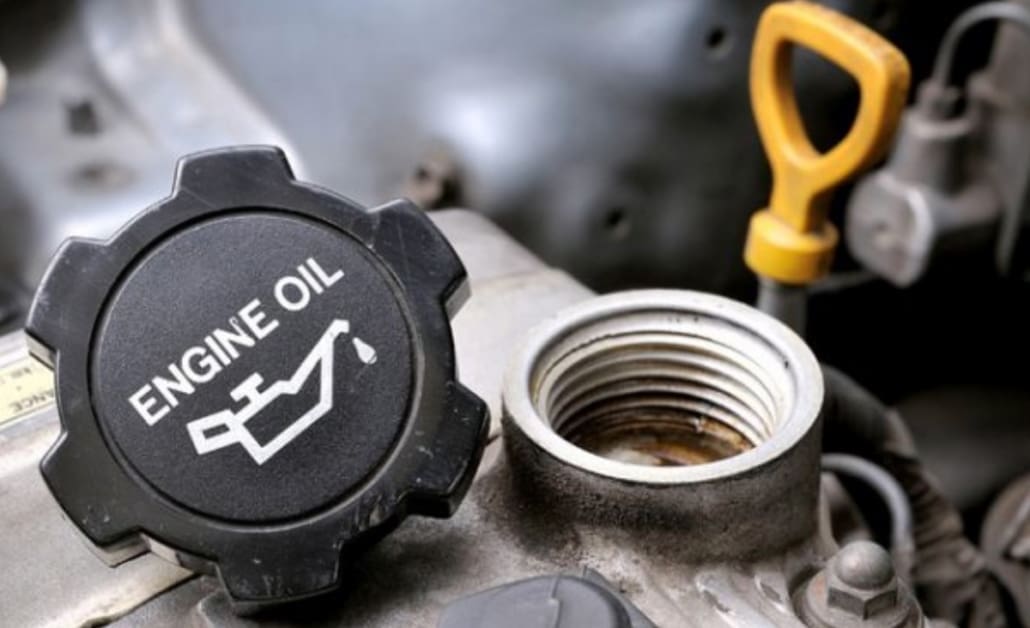
Car dealers usually recommend performing oil changes every 5,000 KM. This has become common practice among car owners. But is that really necessary?
Years ago, frequent oil and filter changes were necessary in order to keep the engine properly maintained.
These days, thanks to advances in engine durability and oil quality, most vehicles can be safely driven with oil replaced every 10 000 KM. Some manufacturers, like Ford or Porsche, recommend changing the oil every 15,000 KM. If your car is running on synthetic oil, you can even drive up to 20,000 KM without an oil change!
Premium (95) Fuel Will Clean Your Engine
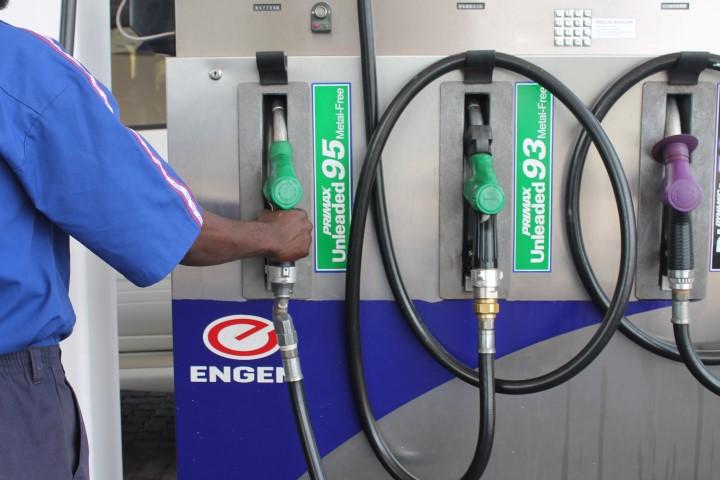
There is a bit of truth to this myth. Premium (95) petrol does have a higher octane level than regular petrol (93), that’s why high octane fuel is commonly used in motorsport and recommended for high-performance cars. Using premium gas in a car such as the BMW M4 will noticeably improve the vehicle’s performance compared to regular fuel.
That said, high octane fuel will only affect powerful engines. Contrary to popular belief, a higher octane level does not make premium gas “cleaner” than regular petrol. Unless your vehicle has a very powerful engine, it is completely unnecessary to fill it with 95.
Manual Cars Are More Fuel-Efficient Than Automatics

During the days of early automatic transmissions, this myth was true. The first automatics on the market were far worse than manuals. They used more petrol and would break down a lot.
Modern automatic transmissions don’t have much in common with the ones from the first half of the 20th century. Gearboxes in sports cars, for example, can shift faster than any human ever could. Automatic transmissions in most cars today have become better than manuals in practically every single way. They shift quicker, offer better fuel efficiency, and extend the lifetime of your engine thanks to carefully calculated gear aspect ratios.
Using Your Phone While Filling Up Petrol Can Lead To An Explosion
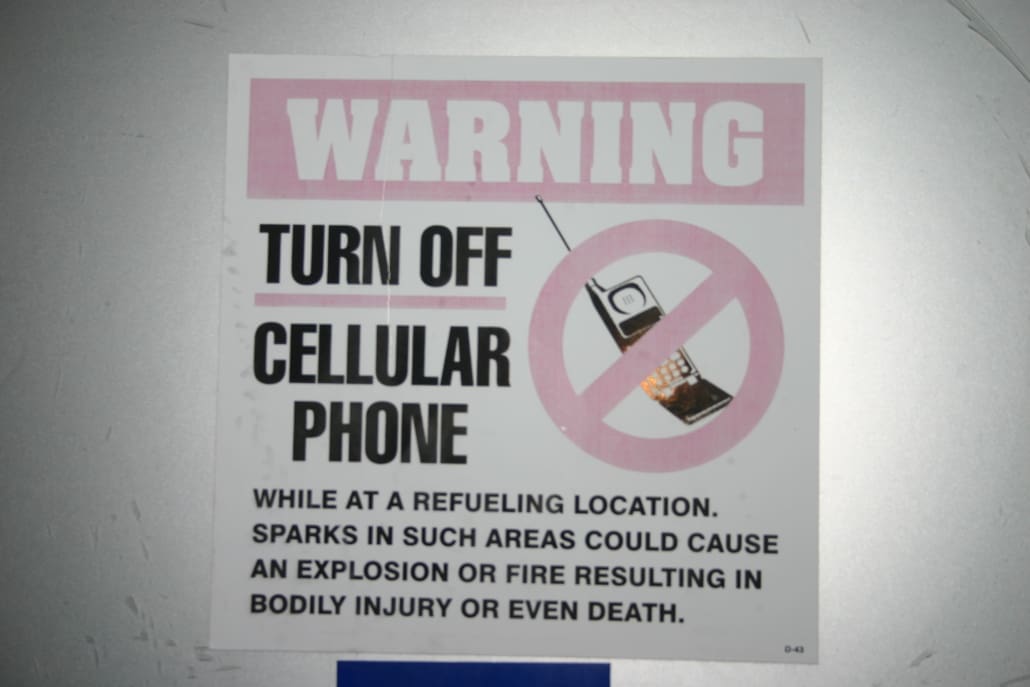
Do you remember the early days of mobile phones? They were bulky and had long external antennas. Back then, from a scientific point of view, this myth could have been true. A phone’s external antenna could have a small discharge that would ignite the fuel and lead to a fire or a spectacular explosion. There aren’t any documented cases to support this theory, but it wasn’t impossible.
Phones these days are equipped with internal antennas, and it has been proven that the wireless signals emitted by modern phones cannot ignite petrol
.
Aircon Instead Of Open Windows Increases Fuel Economy
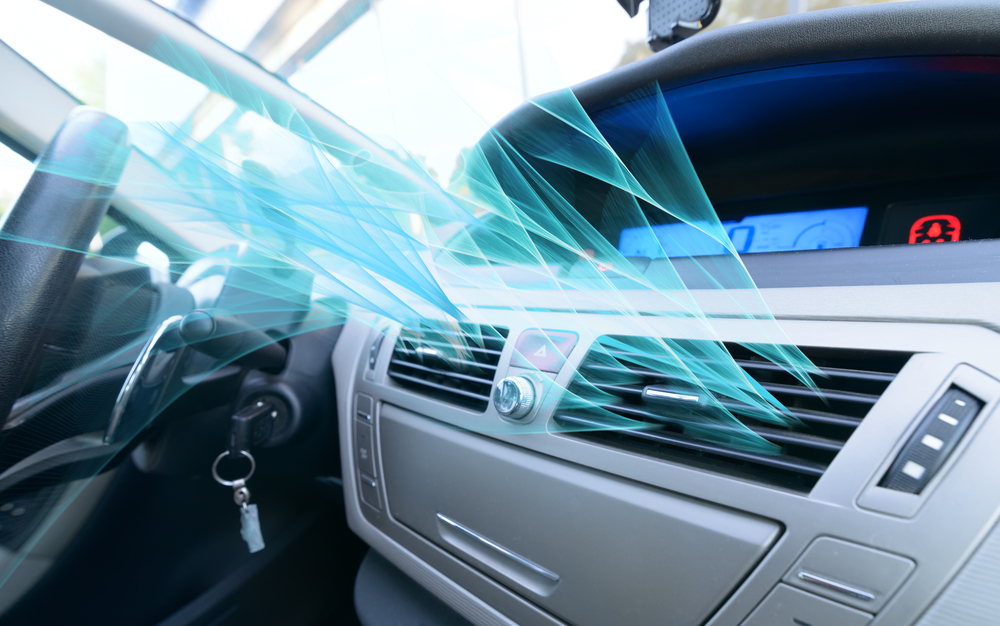
It’s an old summertime driving debate that keeps coming up each year. Is driving with your air conditioning more fuel-efficient than opening the windows?
The short answer is no. Sure, driving with the windows down does increase drag, and in effect the car needs more fuel to run. However, blasting the air conditioning adds load to the engine and ends up needing even more fuel. The Mythbusters conducted a test which proved that opening your windows is in fact slightly more fuel-efficient than using air conditioning. The absolute most efficient solution would be driving with the windows closed and A/C switched off, but perhaps sacrificing a little petrol is worth the comfort.
Dirty Cars Use Less Fuel
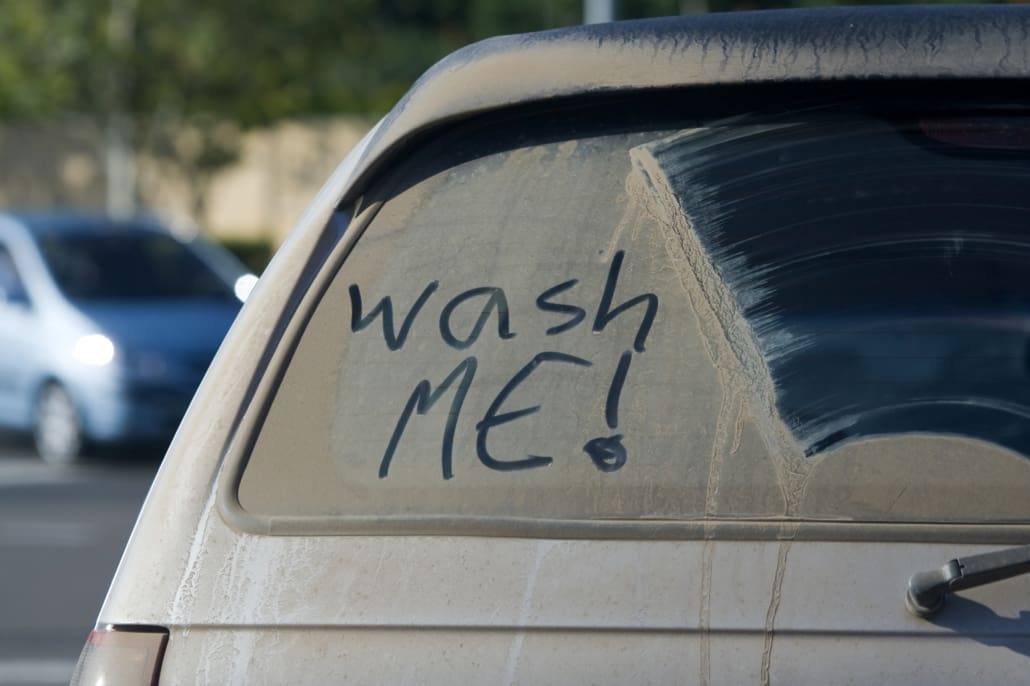
The apparent science behind this myth is that dirt and mud fill the car’s cracks and crevices, improving its airflow and lowering drag. The explanation does not sound completely absurd — even the Mythbusters set out to test this theory.
As you probably guessed, the myth was debunked. In fact, dirty cars turned out to be up to 10% less fuel-efficient than clean cars, as the dirt reduces the aerodynamics and distorts the airflow. If you believe this myth, it is probably best to head to the carwash straight away.
Warm Up Your Engine Before Driving
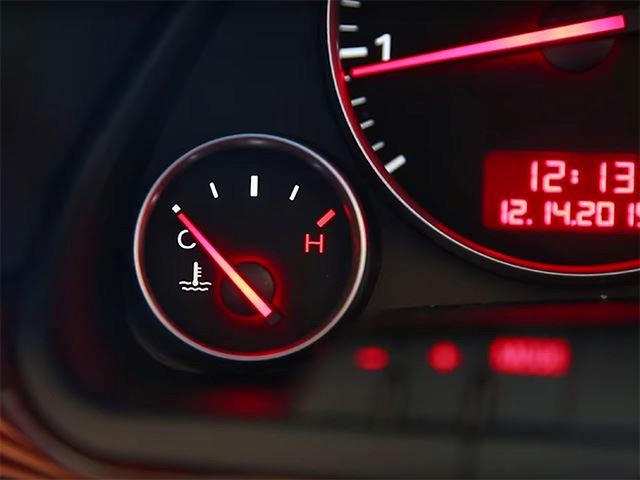
This is one of the most-believed myths on this entire list. Many people think that it is crucial to let a car idle before driving, especially on a cold winter day. This myth is completely false. Sure, it does take some time for a car engine to reach its ideal temperature, but idling to warm it up is completely unnecessary.
A modern car has the technology to warm up the engine by itself and will reach the ideal running temperature quicker by being driven as opposed to idling. It just wastes fuel and generates excessive carbon monoxide.
You Can Wash Your Car With Dishwashing Soap
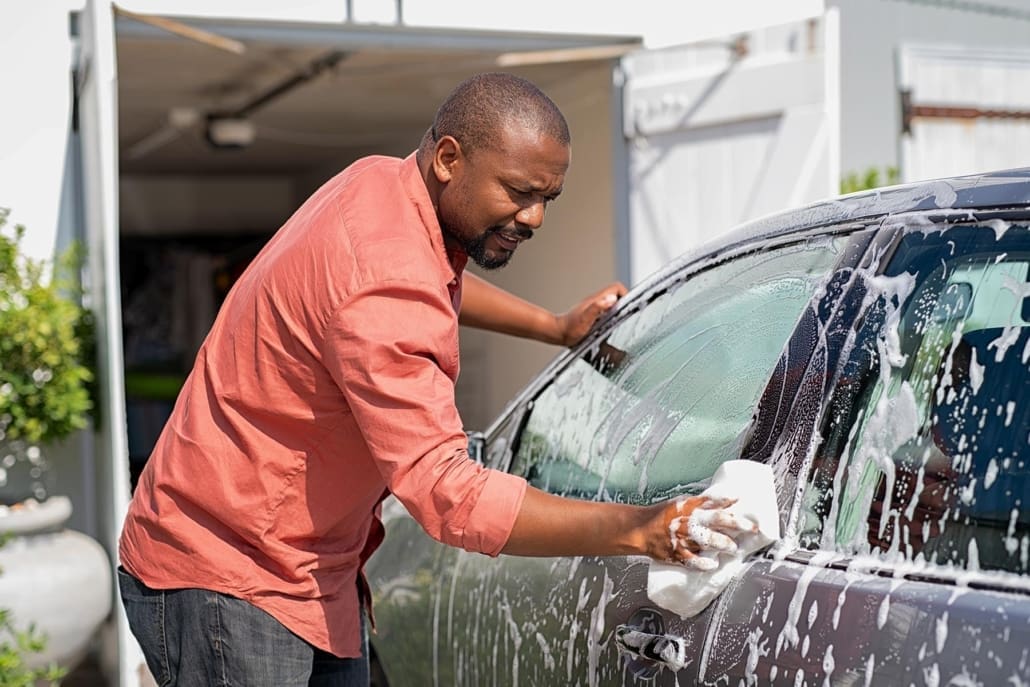
Washing your car with dishwashing soap or, frankly, any chemical that is not meant for cars, is a very bad idea. While you will be able to save a bit of money by using detergent or soap, it will result in stripping the wax off your car and end up damaging paint.
Cars with paint damage will have to be repainted, and a single-coat low-quality paint job will cost at least R4000. Higher quality paint jobs will likely set you back more than R9000. It is best to just invest a bit more money into proper car care products instead of having to repaint the entire vehicle in a couple of months.
A Start-Stop System Wastes Fuel Instead of Saving It

According to this theory, a start-stop system actually increases fuel consumption by repeatedly switching the engine off and on. On top of all this, using the system can apparently lead to permanent battery damage.
Practical tests have proven that cars with a start-stop system can save as much as 15% more petrol than with the system disabled. A start-stop also lowers emissions and is perfectly safe for the car’s battery, so you can disregard this myth and turn the system back on.
You Should Replace All Tires At The Same Time

Changing all four tires at the same time does sound like a very logical and safe practice. However, as it turns out, it isn’t always necessary.
Whether or not you should change all tires at a time typically depends on tire wear as well as your drivetrain. Cars with front-wheel-drive or rear-wheel-drive usually need two tires changed, while all-wheel-drive ones should get the entire set replaced at a time. AWD cars have differentials that send the equal amount of torque to each wheel, and a different sized tire (tires get smaller in time as they lose tread) will result in the differential working too hard and could lead to drivetrain damage.
Click here to get an instant online quote for a car service and repairs for your car!
5 Warnings Signs Your Car Needs New Brake Pads
5 Warnings Signs Your Car Needs New Brake Pads
Your braking system is one of the most important components of your car. Well functioning brakes are crucial to your safety. There are many factors that lead to the wear and tear of your brake pads. Because brake pads are wearing components, they need periodic replacing. Here are 5 warning signs that you need new brake pads.
1. Unusual Sounds When Breaking
If you can hear your car braking, i.e squeaking a noise, its likely that your brake pads need replacing. This noise usually gets louder as you press harder on the brake pedal. Most pads nowadays have wear indicators that make a screeching noise to let you know that your brake pads need replacing. If you hear a grinding sound you have probably completely worn through your pads and need to have you car looked at by a mechanic ASAP!
2. Vibrating Steering Wheel
Although there are many possible reasons causing your steering wheel to vibrate, if the steering wheel only vibrates when you press the brake pedal it’s likely to be either worn brakes or warped disks.
3. Spongy Brake Pedal
If your brakes feel spongy or you feel that you have less braking power, you should replace your pads. Brake pads are made to work best when they are brand new. Over time they lose effectiveness and this eventually causes the spongy feeling when pushing the brake pedal in resulting in a lack of stopping power.
4. Less Than 3mm Of Brake Pad
You can visually inspect your brakes to gauge how much brake pad you lave left. Look through your car’s rims and you should see your brake pad pressed up against your brake disk. Consider replacing your brake pads if you have less than +-3mm left on them.
5. Brake Dust Build Up
Brake dust is the dark-coloured debris that builds up on your cars wheels under normal operating conditions of the braking system. If you notice that there is less brake dust and your wheels seem to be cleaner than normal, you might need a brake pad replacement.
Be aware of these warning signs so you’re able to know when to schedule a brake pad replacement or repair for peace of mind and car safety. Visually inspect your brake pads every few months before any damage is done to your disks or drums. Proper brake pad maintenance means fewer costly repairs and gives you peace of mind knowing that your car can always stop safely.
If you are still unsure, check your vehicle Owner’s Manual or book an inspection today. We understand that your car plays an important part of your daily life, transporting you and your loved ones. Michanic is dedicated to providing the most convenient services for our customers, so if you have any other questions or concerns regarding your car, feel free to talk to our customer service team via email at [email protected], or by phone on 087 803 9000.
Click here to get an instant online quote for new brake pads!
Why It Is Important To Regularly Service Your Car
Regular services are important for good car maintenance. In fact, they are mandatory. Both a major and minor service include an oil change, and oil filter replacement. Engine oil is crucial for engine functionality and must be changed every 10,000 km’s to 15,000 km’s (manufacture dependent).
Here is what a Service Includes and why it is so Important to Regularly Service Your Car
Oil Change
The most important part of a car service is the oil change. If you don’t regularly change your oil, sludge will build up making the oil gummy. This prevents the engine from being well lubricated and creates unnecessary friction – increasing wear and tear, plus generating excess heat. This is likely to result in engine failure and an expensive repair. Without oil, an engine would quickly seize up. The same goes for an engine with really dirty old oil that has lost its effectiveness. Avoid this problem with regular services or oil changes. Good clean oil provides for the best engine lubrication – keep it fresh!
Engine oil is not a substitute for your cars cooling system, but it does absorb and transfer heat in parts of the engine where the coolant cannot reach. Engine oil also cleans the engine by collecting all the dirt and gunk that builds up in an engine. Dirty oil is black with all the grime and gunk and is not effective at lubricating and absorbing heat. But draining the dirty oil means that all the bad stuff goes out. And with a minor service or oil change, your engine will have fresh clean oil that is fit for the job!
Also, ensure the correct type of oil specific to your car is used. And, USE A GOOD QUALITY OIL! Cheap poor quality oil might save you a little now but will cost you more in the long-run.
Filter Replacement
Oil filters help keep your oil clean and free of tiny hard particles. Left unfiltered, these hard particles will wear down engine components such as the oil pump and other bearing surfaces in the engine. Obviously, over time the oil filter builds up all the dirt and becomes blocked. So, replace it at every oil change or when you service your car.
Major services also include air filter replacements. A clean air filter will capture dirt and debris from the air, preventing these small particles from reaching the combustion chamber. The air filter clogs up with dirt over time, restricting the flow of air, making your engine work harder than it needs to.
Spark Plug Replacement
Your spark plugs are only replaced every second service interval i.e. at major services. Spark plugs lose effectiveness as they get old and dirt builds up. They are critical to the functioning of your engine as they provide the spark that ignites the fuel and air mixture inside your engines combustion chamber. Newer spark plugs also require less voltage prolonging the life of your cars battery.
Regular services mean that your engine runs much smoother and is more fuel efficient!
Vehicle Inspection
Our major and minor car service includes not only an oil change and filter replacement but also a comprehensive vehicle inspection, including safety checks. Michanic’s expert mechanics will check for any safety issues that need addressing such as wear and tear on suspension, steering and braking systems. The correct functioning of these components is critical to your cars road-worthiness. Plus, the safety of your passengers! Regular services and inspection can help prevent any major faults down the road.
Pay Attention to Your Service Schedule
The bottom line is that your engine needs to be serviced, regular oil changes and filter replacements (i.e minor service) will prolong the life of your car’s engine. If you don’t service your car regularly, your oil becomes dirty and can get blocked up losing it’s effectiveness. This means that your engine will have to work harder and without effective heat absorption your engine will run hot, resulting in major mechanical issues. This is why full-service history (FSH) is so important when selling a car. So, pay attention to your service schedule! Save yourself from major repair bills and service your car every 10,000 km’s to 15,000 km’s.
Book a Service now with Michanic and one of our trusted mechanic will come to your doorstep to service your car at a time that suits you! We understand that your car plays an important part of your daily life, transporting you and your loved ones. Michanic is dedicated to providing the most convenient services for our customers, so if you have any other questions or concerns regarding your car, feel free to talk to our customer service team through email at [email protected], or by phone on 087 803 9000.
Click here to get a quote for your next service.
Nitrogen Or Air For My Tyres?
You can choose Nitrogen or Air to inflate your tyres. Which one is right for you?
When changing your tyres you will probably be asked if you would like them nitrogen inflated. So, we have provided a summary of how nitrogen compares with air and what is best for you.
Nitrogen is more effective
Pure nitrogen inflated tyres are most used in highly specialised applications like Formula 1 and airplane tyres, or in highly demanding environments like commercial vehicle use. Nitrogen is an environmentally friendly element that does not support moisture or combustion. This means that it doesn’t hold heat and your tyres can run cooler improving road handing and extending tyre life. Plus the lack of moisture also leads to reduced corrosion.
Filling your tyres with nitrogen reduces variations in tyre pressure, and because nitrogen loses pressure slower than air, your tyres will stay properly inflated for around longer. This contributes to improved fuel efficiently and reduced wear on tyres.
Nitrogen does not prevent tire deflation caused by punctures, bead leaks, valve leaks or any other mechanic leaks.
Air is cheaper and more convenient
There’s nothing wrong with keeping your tyres inflated with good old air – it’s been used successfully for years. Air consists of 78% nitrogen and 21% oxygen, despite often being referred to as oxygen. Air has limitations when compared to pure nitrogen, but it’s free and convenient. You can easily check your tyre pressure and top up at your local garage.
Which is right for me?
If you’re like most motorists and use your car mainly to get you from point A to point B, you don’t need nitrogen inflated tyres. The cost and hassle of nitrogen outweighs the benefits. However, if you use your vehicle for commercial purposes or if you want enhanced performance you should opt for nitrogen inflated tyres. You will just have to pay to inflate them and top-ups are more tedious.
Whatever route you decide, the most important thing is to ensure your tyres are inflated correctly. You can find the recommended tyre pressure sticker on the inside of the driver’s door. Check your tyre pressure each time you fill up – don’t forget to check the spare!
We understand that your car plays an important part of your daily life, transporting you and your loved ones. Michanic is dedicated to providing the most convenient services for our customers, so if you have any other questions or concerns regarding your car, feel free to talk to our customer service team through email at [email protected], or by phone on 087 803 9000.
Click here to get a quote for your next service.
7 Tips to Get Your Car Winter Ready
Like it or not, winter is here. Your safety on the road is our concern, and besides for making sure that your car is running smoothly we would like to help make you feel safer behind the wheel. So, follow these 7 Tips to make sure your car is ready to stand up to the elements and doesn’t leave you stranded in the rain.
1. Change your oil
This is something that you should be doing at regular intervals. If you oil hasn’t been replaced is a while, consider replacing it with fresh oil. Clean oil reduces drag on the starter when a cold engine is cranked.
2. Check your battery
Cold weather starting requires a strong battery. Check your battery is fully charged and the terminals are clean of any corrosion and tightly fitted. Most car batteries only last 4 to 5 years, so check the age of your battery and consider replacing it.
3. Check and replace old window wipers
Your rubber wiper blades have a limited lifespan of a year or less. Exposure to the sun, extreme heat, or cold damage the rubber causing wipers to streak, smear, or chatter. This is no good for the rainy season and they need to be replaced.
4. Check your tyre pressure
Your tyres lose pressure as the temperature drops. Underinflated tyres offer less traction cause premature wear and tear making them more dangerous for wet roads. So, make sure that your tyres are inflated to your vehicle manufacturer specifications.
5. Keep your fuel tank full
Anything cold attracts moisture, and because your fuel tank gets cold in winter, moisture from the air inside your empty fuel tank condenses and drips down settling at the bottom. Your engine does not like water, so minimize this condensation effect by keeping your fuel tank full.
6. Check Your Heater and Defrosters
Make sure that your heater is blowing hot air, that your defrosters re-route hot air the windshield and that your electric defogger is working. You don’t want to be stuck in the driveway on a cold winter morning because you can’t see out your windshield.
7. Protect yourself
If you don’t have an emergency kit in your car, it’s time you get one. We also recommend that you prepare for winter and keep a torch, blanket, and umbrella in your boot… but hopefully you won’t be needing the first two.
Not only will you be well prepared for the colder winter months by implementing some of these measures, but you could also save yourself from a big repair bill. Car maintenance and servicing is a critical component of vehicle ownership. Your car plays an important part of your daily livelihood and we are committed to bringing you convenient, reliable, and affordable car service and maintenance. Check our what our customers have to say about us on Hellopeter and Google. If you have any other questions or concerns about your vehicle, feel free to talk to our customer service team through email, [email protected], or by phone, 087 803 9000.
Click here for a quote for your next service
Michanic Brings Contact-Less Service & Repairs
At Michanic (pronounced mychanic), we’re taking action to keep our customers and mechanics safe during the current outbreak of COVID-19 by bringing you contact-less service and repairs for your car.
During these uncertain times, we have to take extra precautions while delivering world class service. We have put some contingencies in place to ensure that our car services and repairs are safer and more convenient.
How we are keeping you safe
We are now offering a “contact-less” key exchange and service, to support the governments’ recommended social distancing. This means you can leave a note for the mechanic who will accommodate your request.
This is how we ensure we fulfill our contact-less service
- You place your booking on the site, add notes for mechanic and pay by card or EFT
- Our mechanic follows your instructions and carries out the service
- After completion of the service, the mechanic will wipe down and disinfect high touch areas.
With these additional steps we want to assure you of Michanic’s dedication to the safety, health, and well-being of you and your family. And of course our mechanics, and as always your cars. We are committed to helping slow the spread of the virus, while making sure your car is well maintained.
Your car is a very important part of your daily life. It transports you and your loved ones, takes you to work, the shops, or even the hospital. Although you may be spending a lot of time inside your home to practice social distancing, make sure your car is always ready to go if you need it. Michanic is dedicated to providing the most convenient services for our customers, so if you have any other questions or concerns about how we are moving forward during this outbreak, feel free to talk to our customer service team through email, [email protected], or by phone, 087 803 9000.
Stay Safe!
Click here to get a quote for your next service.
My car makes a funny noise, what could it be?
We have prepared some pointers for you as to the different noises that could be coming from your car, and what they could mean.
Squeaking noise while braking
This is usually the first sign of worn brake pads. Left alone for a long time, the noise will sound like grinding metal, in that case, you’re seriously damaging your brakes. You may need to also change or skim your brake disks as well and this can be costly. Get your brakes replaced by a qualified mechanic at your home or office
Rattling noise from the engine
There are a lot of moving parts in the engine and therefore this noise can be very confusing as it could be a number of different problems – including issues with the oil not circulating, a faulty aircon compressor or stretched or loose timing chain. When you hear any rattles in your engine, get it inspected as soon as possible.
Hissing and boiling sound from the engine
This is a signal that the engine is be overheating and can cause serious problems further down the line. When you hear that sound, stop immediately. This happens when there is perhaps a fluid leak under the bonnet, radiator leak, a leaking turbocharger pipe or a damaged intercooler. get your car inspected by a qualified mechanic as soon as possible.
Squeaking from the engine while driving
High pitched squeaky noise usually point to an issue with the fan belt and/or pulley. In most instances, both the belt and the pulley/tensioner will need to be replaced. When this happens, get a trusted mechanic to replace your fan belt as soon as possible.
Clunking while turning
In 90% of the cases when this happens, it is because of the CV joints. These should be checked as soon as possible to avoid further damages.
Constant clicking sound from the engine while idling
This is usually, a sign that your engine is running low on oil or running on an incorrect grade of engine oil. If the noise persists after an oil top-up, have your engine checked thoroughly by a mechanic.
A loud knocking sound from the engine
This could be caused by lack of lubrication, or something has broken or lose or about to break inside the engine. The engine will need to be opened to check what could be the issue be.
Humming or growling noise from your tyres
The first thing to do when you hear a noise from your tyres is to check the pressure. If the pressure is correct, have your wheel alignment and balance checked and possibly adjusted.
Grinding noise from your gearbox
This noise is indicative of a potential problem with the clutch or transmission. You may need to replace your clutch as soon as you can.
If any of these noises are coming from your car, the next mechanic is only a click away, here.
Yours in Car Care!


